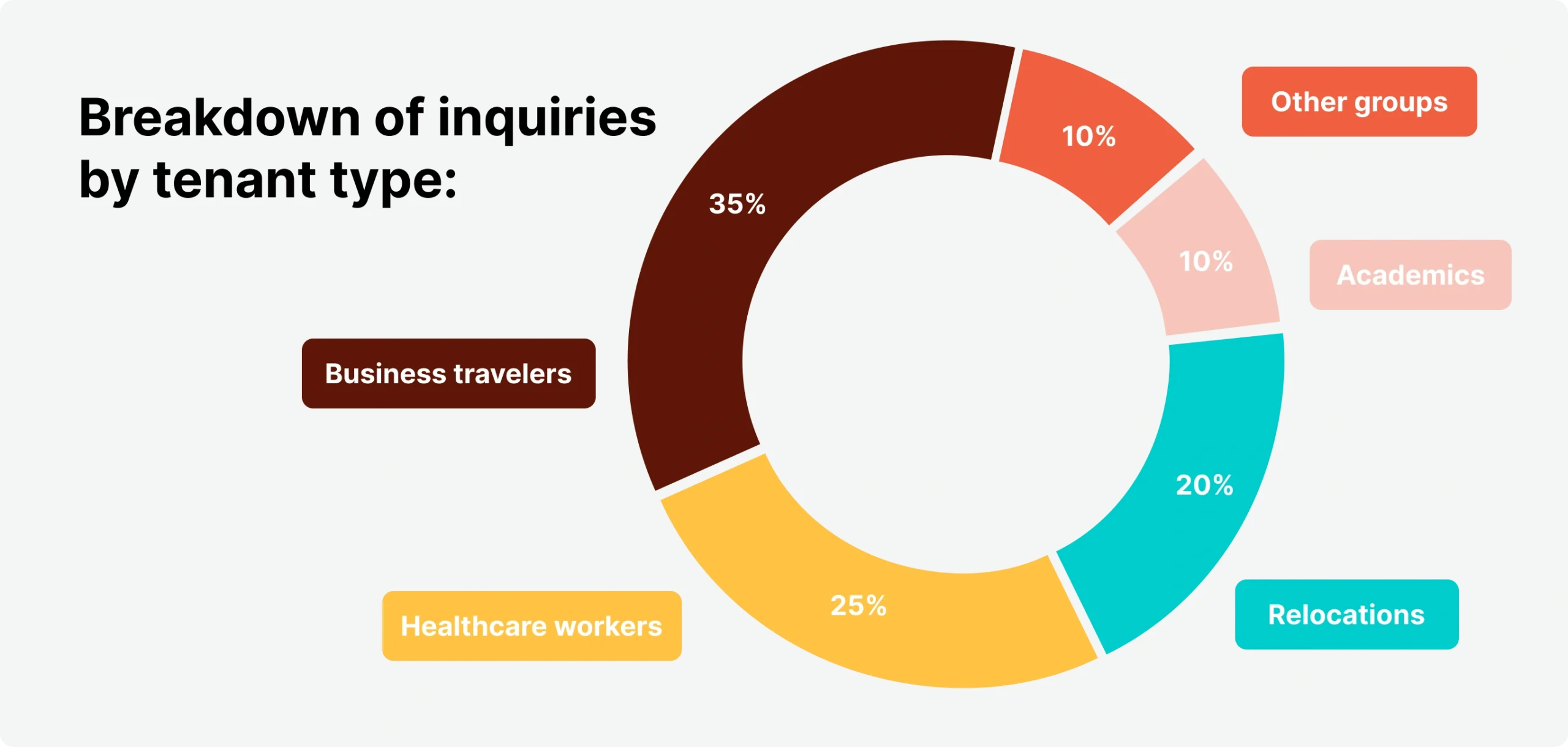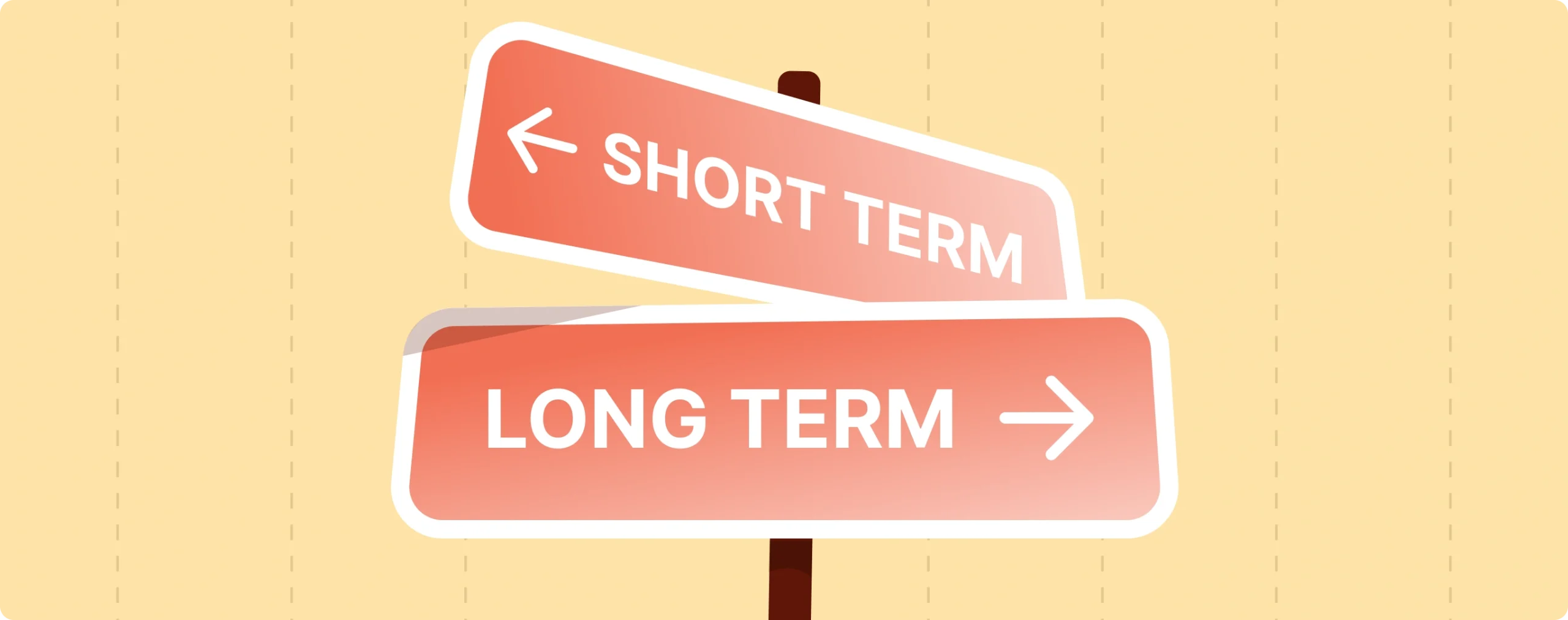Key Takeaways
Mid term rentals fill the gap between short-term holiday stays and long-term leases.
From digital nomads to corporate relocations, this model opens new revenue streams and reduces dependence on seasonal tourism.
Property managers gain stability with steady occupancy rates while avoiding regulations that affect short-term rentals in certain cities.
Demand is booming as requests for mid term rentals have surged, driven by digital nomads, students, and corporate relocations.
The rental market has grown and evolved past short-term holiday rentals and traditional long-term residential leases. Mid term rentals, also known as medium term rentals, have become the new middle ground for property managers.
As international digital nomads, students, and relocating professionals search for housing, utilizing this model can improve your occupancy and profitability.
What is Mid Term Rental?
Mid term rentals are defined as a furnished property that is leased for 1–12 months. Short-term rentals are defined as having occupancy of days or weeks, while long-term leases last over a year.
What Types of Renters are Searching for Mid Term Rentals?
- Remote workers and digital nomads
- International students and exchange programs
- Corporate relocation staff
- Seasonal workers
- Families between homes or insurance claims

Demand for mid‑term rental stays of one to six months has exploded in 2025. Furnished Finder received over 2 million inquiries in Q1 of 2025 alone.
What is the Difference Between Long-Term and Mid Term Rentals?

The main difference in the duration is based on specific regulations within your jurisdiction. For example, many cities within Florida’s rental properties and others within Europe are changing strategy due to changes in short-term rental laws.
| Feature | Short-Term (1–30 days) | Mid Term (1–12 months) | Long-Term (12+ months) |
| Typical Guests | Tourists, weekend visitors | Remote workers, students, and corporate stays | Families, residents |
| Lease Length | Nights or weeks | Monthly contracts | Annual or multi-year contracts |
| Furnished? | Fully furnished | Fully furnished | Often unfurnished |
| Regulations | Heavy in many cities | Fewer/gray area | Strict tenancy laws |
| ROI Potential | High nightly rate | Balanced yield + occupancy | Lower yield but stable |
For property managers, mid term rentals are now providing more stability and greater flexibility.
What Is a Seasonal Rental?
Seasonal rentals have limited availability during peak seasons, with adjusted pricing to meet demand.
Great examples are a ski chalet offered in winter or a seaside apartment in summer. Unlike medium term rentals, seasonal rentals are defined by specific times/events of the year.
What Types of Mid Term Rentals Can Property Managers Offer?
Mid term rentals attract a variety of tenant groups, each with its own needs and expectations. By understanding these audiences, you can adjust your marketing, pricing, and lease agreements.
How to Price Medium-Term Rentals
You need to get the pricing right to make your mid term rental profitable. Unlike short-term stays that bring in nightly income, medium term rentals usually work on a monthly rate, but they can still outperform long-term leases if priced correctly.

Mid Term Rental Calculator
Monthly Rent = (Short-term daily rate x 30) – discount (10-30%)
Pro Tip: The small discount attracts possible renters by giving them the sense that they’re getting added value compared to the short-term rate.
Maximize Your Pricing with Avantio
Manually calculating discounts and seasonal adjustments can be time-consuming. Avantio’s Revenue Calendar and Dynamic Pricing tool can help you auto-adjust pricing for seasonality and demand while maximizing your occupancy and revenue across all of your listings.
What are the Best Platforms for Listing Medium-Term Rentals?
When it comes to finding tenants for mid term stays, the best rental marketplaces and websites are already adapting to this growing demand.
Many short-term platforms now allow property managers to list rentals for one month or more.
Airbnb: Popular with remote workers and digital nomads, with built-in monthly stay filters.
Booking.com: Offers longer-stay options alongside traditional holiday rentals.
Specialized platforms: Sites like Blueground, Homelike, and Flatio focus specifically on medium-term stays.
If you’re stressed about managing your multiple listings, Avantio’s PMS and channel manager can connect to multiple platforms at once, saving time, reducing manual work, and reaching more of the right guests.
Checklist: What to Include in a Medium-Term Rental Lease
When renting mid term you should consider a rental agreement. We suggest your contract covers:

⬜ Lease length: Define the duration and whether extensions are possible.
⬜ Utilities and internet: Specify if they’re included, capped, or billed separately.
⬜ Deposit and damage policies: Outline the amount, conditions for return, and coverage.
⬜ Early termination clause: Set rules for notice periods and penalties if the lease ends early.
⬜ Furnishings and inventory list: Record what’s provided to avoid disputes at checkout.
⬜ Cleaning and maintenance: Clarify tenant vs. manager responsibilities.s
Why Property Managers Should Consider Mid Term Rentals
Mid Term Rentals Offering Flexible Stays
Mid term rentals are becoming a smart choice for property managers. They provide steady income, lower tenant turnover, and a transition through the changing regulations of short-term rentals in certain jurisdictions.
With the right support, managing medium term rentals doesn’t have to be complicated. Tools like Avantio’s PMS, channel manager, and automation features make it simple to set prices, handle bookings across rental websites, and keep occupancy high, all in one place.
Schedule a discovery call with one of the team today
Find out how our innovative property management solutions can help you achieve your full revenue potential.
Schedule a callFAQs
-
What is Mid Term Rental?
A rental that lasts between 1 and 12 months, that is furnished.
-
Are Mid Term Rentals Profitable?
Yes. While they don’t earn as much as peak short-term rates, they have higher returns than long-term lets.
-
Do Medium Term Rentals Need Special Contracts?
Yes, they usually require a lease similar to long-term rentals.









